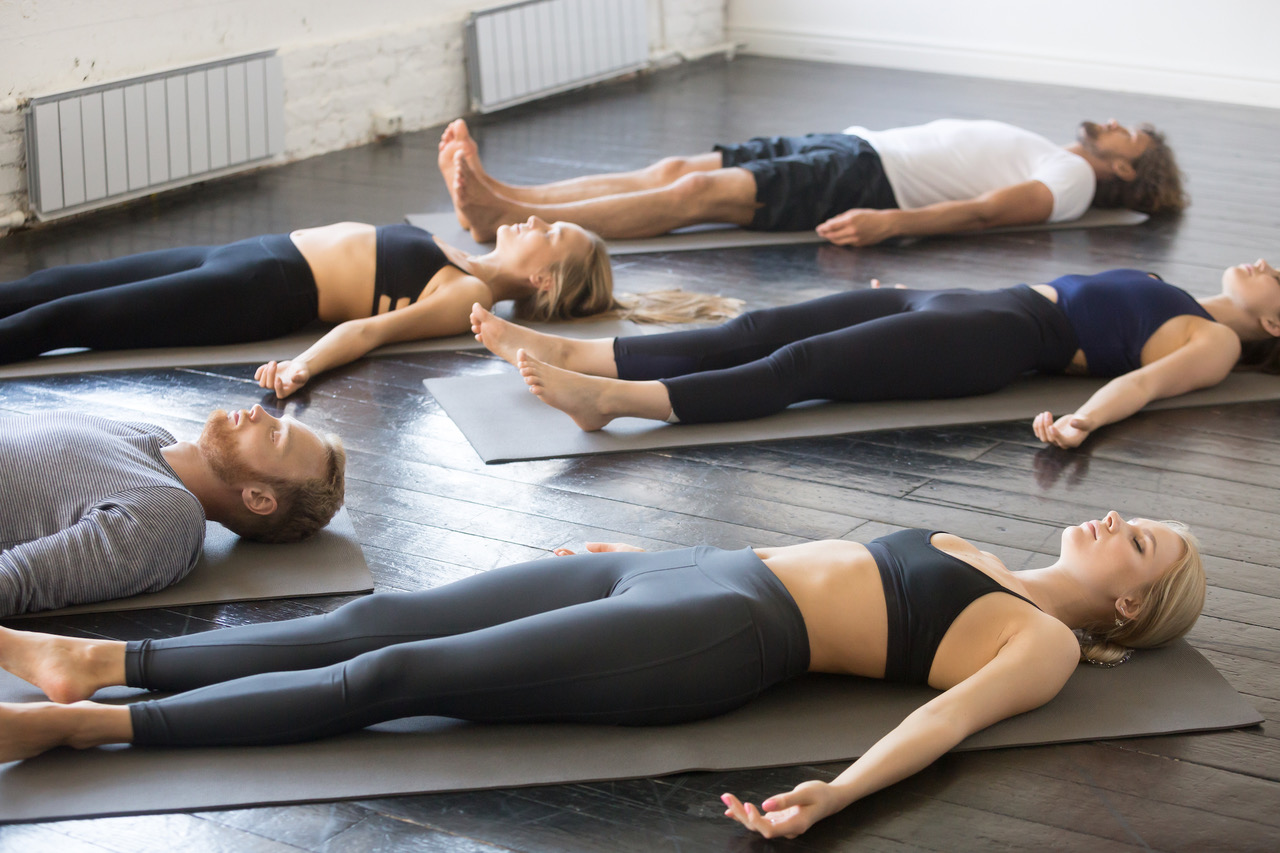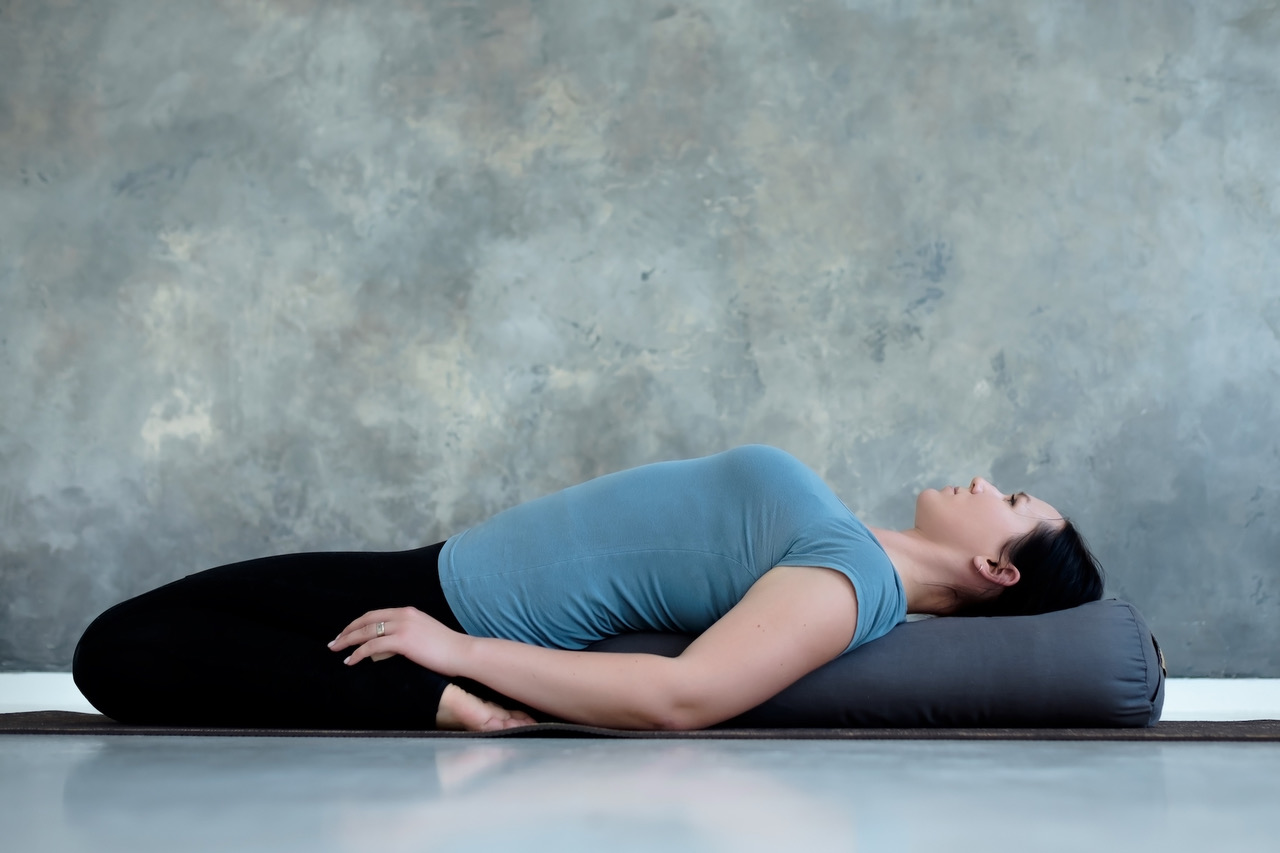By Bernie Clark
November 22, 2023

The yoga teacher makes it sound so easy. “Just relax,” she says. So, you try to relax. It doesn’t work. How can relaxing include trying? Fortunately, she adds a few more clues, “As you breathe out slowly, feel your muscles softening. Let your whole body sink into the earth. Let go of any effort.” Okay, this does feel better but to be honest you are not sure if you are actually relaxed or merely hoping to be relaxed. How can you tell if you are really relaxed? Can you let go even more? If I feel nothing, does that mean I am relaxed? Should I dissociate from my body completely? What is relaxation?
Relaxation is not merely the absence of activity but a profound state of physiological and psychological ease. It’s a condition wherein the body’s muscles soften, the mind quietens, and there’s a noticeable decline in the physiological markers of stress. At the heart of this serene state is the autonomic nervous system (ANS), an intricate system responsible for involuntary functions, from heartbeat to digestion.
The Autonomic Nervous System
The ANS is divided into two main branches: the sympathetic and the parasympathetic nervous systems. The sympathetic nervous system (SNS) is often dubbed the “fight or flight” system. When confronted with a stressful scenario, it primes the body for immediate action—heart rate elevates, pupils dilate, and adrenaline floods the system. Its complement, the parasympathetic nervous system (PNS), sometimes referred to as the “rest and digest” system, promotes a state of calm, facilitating bodily recovery and conservation of energy.
The discovery of the ANS emerged gradually over many years, driven by the observations and research of many scientists. In the 19th century, as anatomists and physiologists delved into the complexities of the human nervous system, they began to notice certain nerve pathways that function independently of conscious control, governing vital functions like heart rate, digestion, and respiratory rate. These were “autonomic nerves.” British physiologist Sir John Newport Langley, in the late 19th and early 20th centuries, proposed the concept of the ANS as a distinct system and introduced a classification based on anatomical and functional differences, segregating it into the sympathetic and parasympathetic divisions.[1] His foundational work, combined with the contributions of other pioneers like the American physician Walter Cannon, who elucidated the “fight or flight” response, helped shape the understanding of the ANS’s intricate and crucial role in maintaining physiological balance within the body. The SNS is the system that responds to stressors. This system deliberately wakes you up and makes it impossible to relax. If we deliberately want to relax, we need to tone that down and ramp up the PNS. But, how do we do that?
Progressive Muscular Relaxation
Dr. Edmund Jacobson, an American physician, physiologist, and psychiatrist who made significant contributions to the field of applied psychophysiology, devoted his career to understanding the relationship between muscle tension and mental states, firmly believing in the interconnectedness of the body and the mind. He observed that physical tension was intrinsically linked to mental and emotional stress. Believing that the reduction of muscle tension could also alleviate anxiety and other psychological disturbances, Jacobson developed a technique called progressive muscular relaxation (PMR) as a method to help individuals recognize and differentiate between sensations of tension and relaxation in their muscles.
Progressive Muscle Relaxation involves systematically tensing specific muscle groups in the body, holding that tension, and then releasing it to induce a state of relaxation. By progressing through the various muscle groups—from the feet upwards to the head or vice versa—individuals learn to discern the contrasting sensations of tension and relaxation. Through regular practice, they not only become more aware of these sensations but also become skilled at voluntarily inducing a relaxed state, thus effectively reducing overall stress and anxiety.
How to Perform Progressive Muscle Relaxation:

Find a Quiet Space: Begin by choosing a peaceful location, free from distractions. This can be your usual yoga space or any quiet room. Lie down on your back, using a yoga mat or comfortable surface. Close your eyes and take a few deep breaths, centring yourself.
Start with Your Feet: As you inhale, curl your toes tightly and tense the muscles in the soles of your feet. Hold this tension for about five seconds, noticing the sensation. Then, exhale and release the tension suddenly, feeling the muscles relax. Observe the difference between the tense and relaxed states.
Work Your Way Up: Move to the calf muscles, then the thighs, and so on, progressing systematically through the body.
-
-
-
- Feet and toes
- Calves
- Thighs
- Hips and buttocks
- Stomach and chest
- Back
- Shoulders and neck
- Arms and wrists
- Hands and fingers
- Face
-
-
Tense and Relax: For each muscle group, tense for about five seconds as you inhale and then exhale and relax for about 30 seconds. (Do not forcibly hold your breath at any time.) As you release the tension, visualize it melting away, leaving the muscles soft, limp, and relaxed.
Mindful Observation: After you’ve relaxed all the muscle groups, take a moment to observe your entire body in its relaxed state. Notice the sensation of calmness and the feeling of heaviness.
Deepen the Relaxation with Breathing: Finish the practice by noticing your breathing. Allow deep, slow breaths, imagining each exhale releasing any remaining tension.
Gradual Return: Slowly open your eyes and take a moment to stretch gently. As you sit up, maintain the sense of calm and relaxation, carrying it with you as you move on with your day.
Dr. Edmund Jacobson did not specifically attribute the relaxation benefits of PMR to the parasympathetic nervous system (PNS) in the manner that we understand today. Instead, his emphasis was on the direct relationship between muscle tension and emotional/mental states. His foundational belief was that mental stress and anxiety manifested physically as muscle tension. By learning to recognize and subsequently release this tension through PMR, a person could achieve not only physical relaxation but also mental and emotional relaxation. His work was rooted in the idea that the body and mind are deeply intertwined.
With advancements in neuroscience and physiology after Jacobson’s time, the understanding of the ANS, particularly the balancing act between the sympathetic and parasympathetic systems, has grown. Modern interpretations and subsequent research on relaxation techniques, including PMR, often integrate this knowledge about the PNS’s role in relaxation and recovery. In other words, although Dr. Jacobson did not associate his relaxation technique with turning on the PNS, that is in fact what occurs.
Relaxation for Yoga Students

For yoga students, understanding this delicate interplay can offer profound insights into deepening relaxation. Yoga inherently integrates practices that stimulate the PNS. The gentle stretches, controlled breathwork (pranayama), and guided meditations, all common in a yoga class, are tools that can temper the sympathetic response and amplify the calming effects of the parasympathetic system.
To deepen their state of relaxation, students can focus on mindful breathing, drawing attention to inhalation and exhalation, fostering a sense of groundedness. Asanas, or yoga postures, should be approached with gentleness, letting go of any force or strain. The final posture in most yoga practices, Shavasana or the corpse pose, encapsulates this principle, encouraging total surrender and profound relaxation.
In essence, by combining the calming aspects of yoga and understanding the role of the autonomic nervous system, yoga students can navigate their way to deeper, more rejuvenating states of relaxation.
________________________________
[1] The term “sympathetic” in the context of the “sympathetic nervous system” has its origins in ancient Greek concepts, but its naming wasn’t directly related to its modern English meaning (i.e., feeling pity or compassion for others). The name derives from the Greek word “sympathes,” which means “with feeling” or “affecting together.” The term was originally used in a more general sense to describe any set of nerves that originated from the same source or had a common function. In the context of the ANS, the term “sympathetic” was used because this part of the nervous system was thought to be responsible for producing coordinated, simultaneous responses in different parts of the body. The sympathetic nervous system can induce a coordinated, widespread effect on multiple organs, preparing the body for the “fight or flight” response. Given its role in producing these coordinated physiological changes in response to stimuli, the name “sympathetic” was fitting. Over time, the term became more specifically associated with the division of the autonomic nervous system that originates in the thoracic and lumbar regions of the spinal cord, especially as the understanding of the ANS evolved and the distinctions between its different divisions became clearer.
